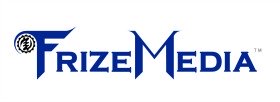Public Relations

Relationship Management
Communicating With Your Key Publics
Public relations: A number of organizations actively engage in 'Issues Management.' Largely, this involves scanning the news, developing communications strategies around relevant issues and trends, and then communicating their messages back through the media. Effective communications, however, is more than just managing issues through the media. Companies and organizations must also be aware of their external publics – the people and groups outside of an organization's sphere that affect, or are affected by, what that organization does. This is known as 'Relationship Management.' It is the discipline of identifying key publics and establishing strategies for building and maintaining mutually beneficial relationships with those publics.
Identifying External Publics Like most organizations, there is a good chance you are already using media monitoring to track the issues that affect your organization. This is Communications 101. You may even be taking it one step further and conducting some kind of media analysis, including assigning tones like positive, negative or neutral to news stories. And if you're not, you should be. Without proper analysis and evaluation, your communications team is not doing its job properly. But where it really gets interesting is when you take your existing monitoring and analysis and add another dimension to it. One of the best examples of this is tracking and analyzing quotes. Tracking quotes helps you identify your key publics.

You can see exactly what they are thinking, what they are saying, what they are doing. And by taking further small steps, such as cross-referencing tone with quotes, you can easily identify the type of relationship that exists between your organization and its different key publics. You can get a picture of what you are doing right and what you are doing wrong, and, where necessary, develop a plan to change the relationship. Obviously, the more positive the quote or article, the greater the chance that the person being quoted is an ally to issues favorable to your organization.
Conversely, the more negative the quote or article, the greater the chance that the person being quoted is opposed to issues favorable to your organization. Furthermore, the more times a person is quoted, the greater the chance he or she is an Opinion Leader – a person that knowingly or unknowingly influences opinion. It's significant that your organization try to have an open and professional dialogue with Opinion Leaders no matter what their position is.
Dealing with Key Publics A lot of people feel the media ultimately control public opinion. There's no denying they do have an enormous influence, but they are only one piece of the PR puzzle. It's important that PR professionals not limit themselves to just the media. Sometimes it's best to communicate right to the source, if possible. Remember, as a professional communicator, your primary job is to disseminate information, not necessarily to deal with the media or write news releases.
How you get the information to your publics is not what matters; what matters is that they get the information. Using the media and writing news releases are simply a means to an end. According to Statistics Canada, 61 per cent of Canadians belong to a group or organization, including organizations unions, religious groups, professional associations, etc. Opinion Leaders are a very important component of these groups.
Once you have identified the groups and their Opinion Leaders, it's important to develop consistent messages that will clearly state your organization's position on key issues. Without that consistency, you run the risk of looking hypocritical or insincere. The last thing you want is to be communicating different messages regarding the same issue.
If you want people to trust you and your organization, consistency is a must. Trust is the first step in developing a relationship with the Opinion Leaders and your key publics.

Honesty is Always the Best Policy Remember, when it comes to any type of communications, honesty is always the best policy. Trying to manipulate the media or the public is a dangerous game. If you're honest, people might not always like what you have to say, but at least they'll believe you and have a greater respect for you in the long run.

Monitoring the Media Helps Ensure Honesty Prevails
Monitoring the media allows organizations to ensure everyone is on message, helping to prevent misunderstandings through inadvertent contradictions or an overly aggressive spokesperson. Also, proactive media analysis can gauge how well key publics and other influencers, such as the media, are accepting your organization's position on an issue.
Media Analysis is a Powerful Tool, but... Media analysis can help identify miscommunication, and can also help identify the underlying reason for that miscommunication. It's also an effective way of identifying key publics and opinion leaders, gauging where they stand on an issue and finding out what they are saying.
We Are Helping 1000 Businesses Amplify Their Online Presence
However, it's important to remember ‘Relationship Management' is about dealing with people directly. Media analysis is just a tool to help ensure your organization is communicating honestly and effectively – the same way the media are just a vehicle for delivering your message.

But even if you have a top notch media analysis program in place, you should never stop communicating directly with your key publics to figure out where they stand on key issues and how they view your organization. After all, public relations and communications are all about communicating effectively, and nothing is more effective than getting your information straight from the source.
Public Relations And What It Means For Your Business
The True Measure Of Your PR Is The Perception Of People
7 Key Principles Of Relationship Marketing To Attract Customers
How Well Do Your Customers Know You?
Browse All Our Informative Topics
InternetBusinessIdeas-Viralmarketing Homepage
Tweet
Follow @Charlesfrize












